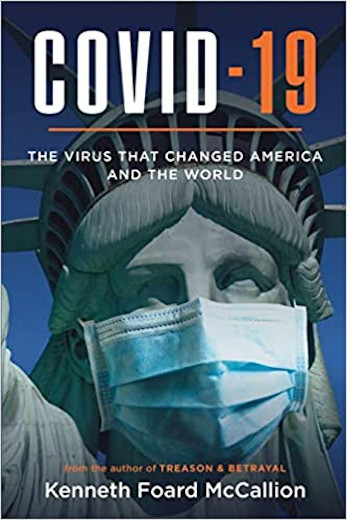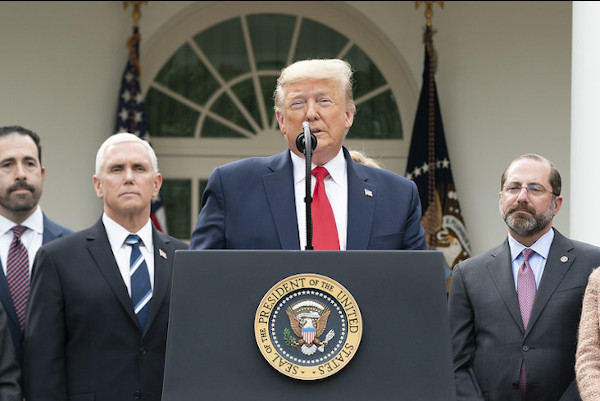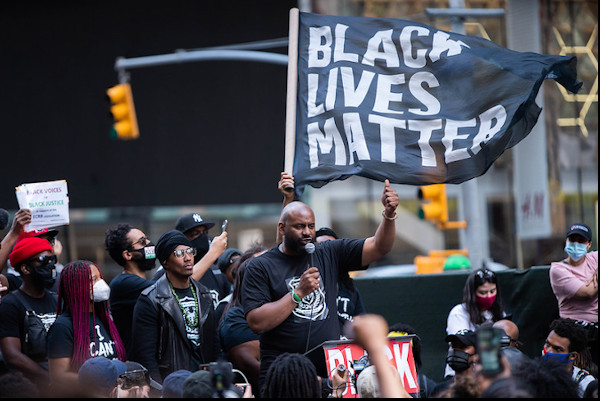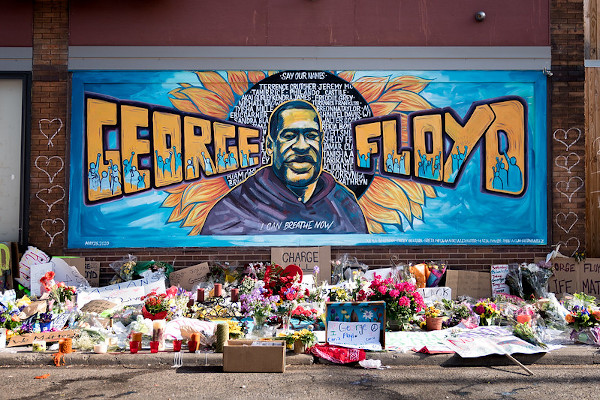How COVID-19 Changed America and the World Forever

Plagues, pestilence, and pandemics have always been an essential part of human existence since the dawn of recorded history. As we are now painfully aware, they are very much a part of modern life as well. Silent microbial killers have shaken and toppled civilizations in the past. Today, thanks to improvements in global transportation and technology, deadly viruses can spread faster than ever. Although humans have shown remarkable resilience in the face of adversity, these cataclysmic events have left a profound mark on every society and generation, including our own.
Epidemics force us to re-examine our relationship with each other, and - for those of us who are religiously inclined - our relationship with our Creator. Pandemics necessarily involve issues of life and death. They inevitably force us to come to grips with fundamental moral and existential questions. What is the good, the just, and the right thing to do in a global health crisis? What should we avoid doing? What sacrifices are we willing to make individually for the common good? How long are we prepared to make those sacrifices as the epidemic drags on from weeks into months, and possibly years? Are our leaders telling us the truth about these life-and-death matters? Are they interested in the health, safety, and survival of the maximum number of our fellow citizens, or are they acting in their own political and financial self- interest? In a pandemic, one person’s actions or inactions – especially if they are in a leadership position - can have a profound effect on what happens to the rest of us. One infected person who does not abide by the rules of quarantine is jeopardizing countless others.
By now, we all know that the COVID-19 virus – unchecked by social distancing and other mitigation measures - can spread through an entire community like wildfire through dry brush. It has been said that a butterfly can bat its wings in one part of the world and create a ripple effect that becomes a hurricane on the other. Our fates are more interconnected than ever before. Yet, at the same time, we are so separated and isolated from one another.
In the pre-COVID-19 era, almost all of us were so wrapped up with the daily demands of family and our work that we had little time to reflect on the bigger picture. What are we doing here, and what is our place in the cosmos? Once we had to stay home, we had time to think about fundamental issues concerning the welfare and survival of our communities, our country, our way of life, and the planet.
Some of us who can’t stand to have the TV on all of the time welcomed the silence. We took the time to read books (or even write them), take long walks, smell the flowers, or just let our minds wander to wherever they may take us. For me, the gnawing question that kept rising to the fore was: How did we get to this point? How can it be that we have been collectively brought to our knees by a single new virus? How did it happen with all the technological and scientific advances, with the “wonder drugs” and vaccines that have eliminated polio, measles, and smallpox?
Since the end of World War II, our society has faced several pandemics and public health emergencies. Still, none of them have closed down all of our businesses, our schools, and driven us in fear into our homes, knowing that there is no cure and no vaccine? In 1957, a vaccine for the Asian Flu was developed between the time that it was first reported in Hong Kong in April of that year to the time that American schools started opening up in the Fall. U.S. government scientists and private industry saw that an epidemic was coming, mobilized their collective resources, and came up with a prompt solution. In 2003, during the first SARS pandemic, our federal government rose to the occasion. It minimized the potential impact of this deadly virus.

The U.S. government also responded admirably to the Ebola crisis of 2014. In the aftermath, critical government agencies were established as early warning systems against the next outbreak. We all expected that our country would be prepared to face the next challenge with equal efficiency and effectiveness. We were sorely mistaken in the assumption.
We could not have foreseen that an accidental president would move into the White House, and then proceeded to dismantle the carefully crafted government plans designed to prepare for the next viral pandemic. The government’s testing capabilities were woefully inadequate. The government stockpiles of necessary N95 and surgical masks, mechanical ventilators, and other essential medical supplies and equipment were depleted. There was no coherent federal response plan in place to deal with the crisis.
We now know the federal government knew as early as November of 2019 that a new and virulent virus was wreaking havoc in China. The White House and the rest of the federal government also knew from intelligence reports that it was likely this virus would spread to the U.S. within a matter of weeks. Nevertheless, the Trump Administration failed to heed the alarm bells that were ringing and the warning lights that were flashing, or simply ignored them. Either way, the result was the same: Critical weeks and months were squandered that should have been effectively used to prepare for the public health onslaught that was surely on its way.
As detailed in this book, U.S. officials knew about the virus outbreak in Wuhan, China, as early as November and December 2019. By early January 2020, the U.S. Centers for Disease Control (CDC) was already in touch with its counterpart in China about this virus outbreak, and China provided the U.S. with the complete set of genetic material of the coronavirus. Also, in early January, the U.S. Department of Health and Hospital Services (HHS) had already started drawing up contingency plans for enforcing the Defense Production Act (DPA), which enables the government to compel private companies to produce equipment or devices critical to the country’s security. However, disputes within HHS and the White House prevented the government from implementing the DPA for many weeks. By January 18, Trump got a full briefing on the coronavirus threat to the U.S. from his HHS Secretary, Alex Azar. Trump’s response was to discount the threat, telling Azar that he was “an alarmist.” Throughout January and thereafter, he was also being briefed on the risks of the pandemic spreading to the U.S. in the daily briefings that were compiled for him by U.S. intelligence agencies.
The U.S. reported its first confirmed coronavirus case on January 21, which was a U.S. citizen in Washington State who had recently returned from a trip to Wuhan, China. The U.S. thus knew by the second half of January that the virus was already in this country and that the prudent course of action would be to impose social distancing and other mitigation measures designed to slow the spread of the virus. Not only did the U.S. fail to take any steps to stop the virus’s spread, but President Trump repeatedly downplayed the risk to the country. Indeed, on January 22, when asked while he was at the global economic forum in Davos, Switzerland, whether he was worried about a potential pandemic, Trump responded: “No. Not at all. And we have it totally under control. It’s one person coming in from China... It’s going to be just fine.”

On January 29, President Trump and other senior White House officials were advised of a memo prepared by Senior White House Advisor Peter Navarro, warning that the coronavirus could cause as many as 500,000 deaths worldwide and trillions in economic damage, much of it in the U.S. The following day, January 30, H.H.S. Secretary Azar again warned Trump about the “possibility of a pandemic.” Nevertheless, the U.S. failed to take any action in either January or February to restrict the spread of the virus that was already documented to be spreading in the U.S., although the Trump Administration did declare a public health emergency and banned non-U.S. citizens from entering the country from Hubei Province in China. However, 300,000 people had already traveled to the U.S. from China during the month before the ban. Also, more than 40,000 people traveled from China to the U.S. after the January 31 partial ban, and around 430,000 total between the December 31, 2019 disclosure of the outbreak by China and April 4.
Throughout February 2020, the Trump Administration continued its default policy of doing nothing to try to stop the spread of the virus in the U.S., while continuing to lull the American public into a false sense of security. On February 10, for example, Trump continued to reassure the American people: “I think the virus is going to be — it’s going to be fine.” On February 14, Trump reassuringly – and falsely – misrepresented the scope of the problem: “We have a very small number of people in the country, right now, with it. It’s like around 12. Many of them are getting better. Some are fully recovered already. So we’re in very good shape.”
Behind the scenes, however, Trump and his senior officials continued to receive dire warnings that the pandemic spreading in the U.S. would have catastrophic results. On February 14, for example, a White House advisory group headed by Dr. Robert Kadlec, HHS Assistant Secretary for Preparedness and Response (ASPR), prepared a memo in coordination with the National Security Council, entitled “U.S. Government Response to the 2019 Novel Coronavirus,” documenting the drastic measures that were needed to combat the coronavirus’ spread, including stay-at-home orders, bans on public gatherings and sporting events, school closures and social distancing. Nevertheless, Trump and his senior officials continued to ignore this rapidly growing crisis. They refused to make the hard decisions needed to stem the spread of the virus and to tell the American public the truth about the looming threat they were facing.
By late February, a leading Homeland Security medical officer and other experts concluded that the U.S. had already lost the fight to contain the virus and that the country needed to immediately switch to mitigation efforts such as social distancing and stay-at-home orders to stem the spread of the virus. Also, in late February, the White House coronavirus task force conducted a mockup exercise of the pandemic, predicting that there would be 110 million infections, 7.7 million hospitalizations, and 586,000 deaths. The White House task force also presented President Trump with a plan setting forth the “Four Steps to Mitigation,” including recommendations for social distancing and other restrictions. President Trump, however, ignored all such warnings and recommendations. Instead, Trump continued with his optimistic happy-talk, saying, as he did no February 19: “I think it’s going to work out fine. I think when we get into April, in the warmer weather, that has a very negative effect on that and that type of a virus.”
In early March, the White House continued to refuse to warn the American public of the catastrophic pandemic descending on the U.S. or to urge the implementation of stay-at-home orders and other mitigation measures on a nationwide basis. The White House also ratcheted up its opposition to any vigorous pandemic response efforts by attacking the media and democratically elected representatives who were trying to sound the alarm about the spreading pandemic. For example, on March 9, Trump went into attack mode: “The Fake News Media and their partner, the Democrat Party, is doing everything within its semi-considerable power (it used to be greater!) to inflame the coronavirus situation, far beyond what the facts would warrant. Surgeon General, ‘The risk is low to the average American.’” Trump also erroneously compared Covid-19 to the common flu: “So last year, 37,000 Americans died from the common flu. It averages between 27,000 and 70,000 per year. Nothing is shut down, life & the economy go on. At this moment, there are 546 confirmed cases of Coronavirus, with 22 deaths. Think about that!”

Similarly, on March 11, Trump gave an Oval Office address, stating: “[For] the vast majority of Americans, the risk is very, very low.” He also continued to resist calls for social distancing, school closures, and other steps that would imperil the economy. The following day, on March 12, the Trump administration postponed the Director of National Intelligence’s (DNI’s) annual U.S. World Wide Threat Assessment, warning that the US was unprepared for the global pandemic. On March 13, HHS completed a study “not for public distribution” that assumed the COVID-19 “pandemic will last 18 months or longer and could include multiple waves of illness.” It also concluded that the “supply chain and transportation impacts” would “likely result in significant shortages.” Still, the White House took no action. On March 16, in a conference call with Governor Gretchen Whitmer of Michigan and several other governors, Trump essentially washed his hands of any federal responsibility for the pandemic response efforts, telling the governors that they were basically on their own in stocking up on gear such as respirators and ventilators.
In retrospect, the most critical week for the U.S. to have taken action was the first two weeks of March. During the first week of March, from Sunday, March 1 to March 8, 2020, the number of coronavirus cases grew from only a handful to 500 coronavirus infections reported nationwide. However, the following Sunday, March 15, the number of confirmed cases had jumped to 2,000, with dozens of reported deaths.
During the first half of March, there was still a chance that public health officials might be able to contain the pandemic in this country through shutdown orders and other mitigation measures. But the federal government did nothing, and in fact, President Trump continued to downplay the seriousness of the pandemic. His soothing words tended to lull the American public into a false sense of security. The shutdown orders did not come until later in the coronavirus epicenters such as New York, Illinois, and Ohio.
So, what would have happened if the federal government had acted with the degree of vigilance that we had come to expect from the Ebola crisis and other pandemic threats? What if those sweeping measures imposed on or after March 15 — a federal warning against large gatherings, health screenings at airports, states of emergency declared, etc. -had been announced one or two weeks earlier?
A group of Columbia University epidemiologists calculated that if social distancing and other mitigation measures had been put in place by March 1, then 54,000 Americans who subsequently died from the coronavirus would still be alive. And if those measures had been adopted one week later, on March 8, then 36,000 fewer American lives would have been lost, which would have meant that about 40 percent of the 93,000 COVID-related deaths in the U.S. reported as of the date of the study (May 20) would likely still be alive.
By May 2020, the coronavirus crisis had already mutated into the worst economic crisis this country has faced since the Great Depression of the 1930s. More than 40 million people - one in four American workers - had filed for unemployment benefits since the coronavirus pandemic forced most of the U.S. economy to shut down in March. This economic hardship fell the hardest – as it always had – on the poor, Native Americans, and people of color. The virus had descended on black, brown, poor white, inner-city, rural and Native American communities like a heat-seeking missile, targeting the most vulnerable in our society who had already been beaten down by grinding poverty, chronic illness, diabetes, high blood pressure, opioid abuse, lack of educational and job opportunities, and hopelessness. A vast underclass in the country had been growing for decades, barely scraping by week after week and month after month, living from payday to payday until their jobs suddenly evaporated and they were unemployed.

Then the hopelessness and frustration caused by the public health crisis and the ensuing economic crisis collided with an even more toxic element that had been there all along, namely, the structural racism and brutality already ingrained in American life. These three elements – the virus, the economic meltdown, and racism – formed a combustible and toxic brew that exploded throughout the country. We learned to our horror that a young Black man in Georgia, Ahmaud Arbery, had been gunned down and murdered by three white men while he was out for a jog in broad daylight. Also, in Louisville, Kentucky, an unarmed black woman, Breonna Taylor, was shot by police in her own apartment while they were executing a “no-knock” warrant. They ended up literally executing Ms. Taylor with multiple gunshot wounds.
The simmering rage in black communities around the country finally boiled over into demonstrations and protests after George Floyd, another black man, died while in police custody in Minneapolis on May 25. A video of the incident, which quickly went viral, showed Floyd handcuffed on the ground with a white police officer kneeling on his neck for 8 minutes and 46 seconds while he pleaded for his life, repeatedly saying, “I can’t breathe.” These were the same last words spoken by Eric Garner, yet another black victim of police brutality, just before he too died on July 17, 2014, in New York City. It also turned out that George Floyd was infected with the coronavirus, but it was the systemic virus of racism that killed him.
The demonstrations that first erupted in Minneapolis were reasonably peaceful until a full four days after Floyd’s murder, when former police officer Derek Chauvin – who had been fired along with three fellow officers immediately after the incident - still was not in police custody and not charged with a crime. After a night of violent protests, fires and looting ripped through Minneapolis and neighboring St. Paul on May 28, Chauvin was finally taken into custody on Friday, May 29. Mostly peaceful demonstrations took place in almost every major city around the country, with some violence erupting, and the police overreacting in several cities, including New York City.
The demonstrators demanded that America acknowledge that Black Lives Matter and that the gratuitous killing of young Black men by the police and white vigilantes had to stop. The response to demonstrators demanding an end to police brutality of Black people was met, in many cases, with even more police brutality.
The demands of many demonstrators - many of whom were white, Hispanic, and Asian - expanded to include demands for the elimination of systemic racism in all aspects of American society, including employment, education, and housing. The issue of reparations to the African-American community for 401 years of slavery, degradation, and discrimination also rose to the fore, and it seemed like a healthy debate was suddenly emerging as to long-needed reforms of the criminal justice system and policing in America. Confederate statues came down and, even more incredibly, NASCAR banned the Confederate flag, which had been a mainstay at such events forever (or so it seemed).
Some of the demonstrations in Washington, D.C. took place in the historic Lafayette Park, immediately adjacent to the White House. Although generally peaceful, during a particularly boisterous Friday night demonstration that spilled over to an area close to the White House, the U.S. Secret Service moved President Trump and his family to a secure bunker in the basement of the White House. This bunker had last been used by Vice President Dick Cheney in the uncertain days following the September 11 terrorist attacks. When asked about it by reporters, Trump denied having hidden in the bunker, concocting a typically nonsensical story about having been down in the basement to “inspect” the bunker, as if bunker inspections were a previously undisclosed part of the president’s job description.
Trump sat stewing in the White House all weekend, becoming increasingly irate over the press coverage characterizing him as having “hidden” in the basement bunker, making him look fearful and weak, the two adjectives that he most hated, except when used to describe anyone other than himself. And when he took a break and went to look out one of the White House windows, he became even more furious as he helplessly watched as Washington’s mayor ordered the installation of a new street sign renaming the square across from the White House as “Black Lives Matter Plaza.” To add insult to injury, the words “BLACK LIVES MATTER” were now written on the street in bright yellow giant block letters so they could be plainly seen from the White House.
Some bold, or even reckless, action had to be taken to prove that he was strong and tough. Trump feared that the public narrative was slipping away from him, and even his Secretary of Defense, Mark Esper, was starting to publicly express misgivings about ordering in federal troops to Washington, D.C. and creating a “Battlespace America” plan to confront the still growing demonstrations that were taking place now every night. Attorney General Bill Barr, however, had no such concerns about the potential for massive violations of the civil rights of peaceful demonstrators exercising their First Amendment rights of free speech and assembly. “General” Barr (as he liked to be called) took charge of the military-style response to the demonstrations outside the White House, calling in U.S. Bureau of Prisons riot police from as far away as Texas. These federal officers, who had a well-deserved reputation for quickly quelling prison riots through the use of “maximum lethality” if necessary, were part of the plan by Trump and Barr to “get tough” with the demonstrators and to “dominate” the D.C. battlefield. Other federal officers from multiple organizations flooded into Washington, but their names and affiliations were impossible to decipher since they were stripped of their insignias and other means of identification. These federal officers eerily resembled the unidentified Russian paratroopers sent by Putin to annex Crimea in 2014, who were referred to as “little green men,” since their green uniforms had been stripped of all insignias.
On Monday afternoon, June 1, a snap decision was made by Trump that he would show America and the entire world that he was in total control of the situation and fearless enough to actually exit the White House on foot and then walk - with assorted military and non-military advisors - the short distance to St. John’s Church on the other side of Lafayette Square.
This is an excerpt from Kenneth Foard McCallion’s new book, Covid19: The Virus That Changed America and the World (Bryant Park Press). Printed with permission.
Highbrow Magazine
Image Sources:
--Bryant Park Press
--Alexandra Koch (Pixabay, Creative Commons)
--Anthony Quintano (Flickr, Creative Commons)
--Shealah Craighead (Whitehouse.gov, Creative Commons)
--Lorie Shaull (Flickr, Creative Commons)






























































































































































































































































































































